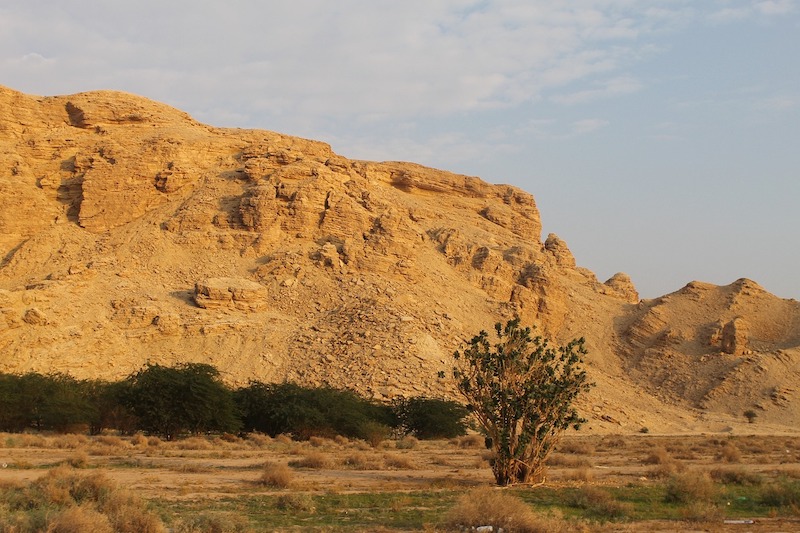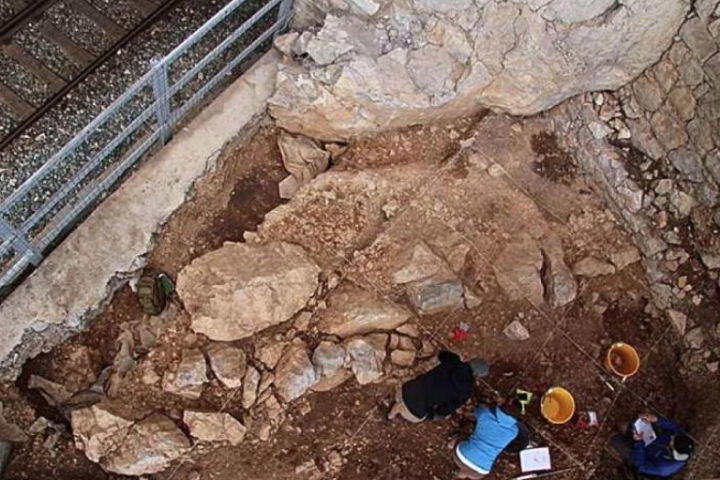Ancient humans may have paused in Arabia for 30,000 years before spreading from Africa to the rest of the world.
Most scientists agree that modern humans evolved in Africa more than 200,000 years ago and that a large human diaspora across most of the rest of the world occurred perhaps 60,000 to 50,000 years ago.
Now, in a new paper published in the Proceedings of the National Academy of Sciences, researchers have uncovered dozens of different historical changes in the human genome to reveal a new chapter in this story.
The study suggests that there may have been a previously unknown phase of humanity’s great migration: a 30,000-year “Arab pause” when humans settled in and around the Arabian Peninsula. These people gradually adapted to the region’s colder climate before heading to Eurasia and beyond.
The legacy of these adaptations lives on. Under modern conditions, many genetic changes from this period are linked to diseases such as obesity, diabetes and cardiovascular disorders.
History in our genomes
Since 2000, when the first human genome was published, the amount of available human genomic data has grown exponentially. These rapidly growing datasets contain traces of important events in human history. Researchers are actively developing new techniques to find these traces.
When ancient humans left Africa and spread around the world, they likely faced new environments and challenges. The new pressures would have led to adaptation and genetic changes. These changes would then be inherited by modern humans.
Previous research on genomic data suggests that ancient humans most likely left Africa and spread across the planet between 60,000 and 50,000 years ago.
However, we still don’t know much about genetic adaptations during this critical time period.
Ancient adaptation events
Now a team of evolutionary and medical researchers has shed new light on this period. By examining both ancient and modern genomes, they have shown that genetic selection was likely an important facilitator of this ancient human diaspora.
Using ancient human genomes makes it possible to recover evidence of past events in which certain genetic variants were strongly favored over others and spread rapidly by a population. These “hard spread” events are surprisingly rare in modern human genomes, most likely because their traces have been erased or degraded by subsequent mixing between populations.
However, in earlier studies, researchers identified 57 regions in the human genome where an initially rare beneficial genetic variant effectively replaced an older variant in ancient Eurasian groups.
The new study reconstructed the historical spread of these genetic variants. It also estimated the temporal and geographic origins underlying selection pressures.
They also identified the gene in each hard spread region that was most likely to have been selected. Knowing these genes helped to understand the ancient pressures that may have led to their selection.
Coping with the cold
The findings suggest that early humans went through an extensive period of adaptation lasting up to 30,000 years, before the great diaspora between 60,000 and 50,000 years ago. This period of adaptation was followed by a rapid expansion from Eurasia to Australia.
Researchers call this period the “Arabian pause”. Genetic, archaeological and climatic evidence all suggest that these ancient humans most likely lived in and around the Arabian Peninsula.
Genetic adaptations included parts of the genome related to fat storage, nerve development, skin physiology and small hair-like fibers. These adaptations share striking functional similarities with those found in humans and other mammals living in the Arctic today.
The researchers also identified similar functional similarities with previously identified human adaptive genes derived from historical interbreeding events with Neanderthals and Denisovans. These distant relatives of humans are also thought to have adapted to cold Eurasian climates.
Overall, these changes appear to have resulted from adaptation to the cool, dry climates in and around prehistoric Arabia between 80,000 and 50,000 years ago. The changes would also have prepared ancient humans for the cold Eurasian climates they would eventually encounter.
Ancient adaptations, modern diseases
Many of these adaptive genes have links to modern diseases, including obesity, diabetes and cardiovascular disorders. Adaptations around human expansion from Africa may have created genetic variations that are associated with common diseases under modern conditions.
As the researchers suggested in another study, genes that were adaptive in the past may have contributed to modern human susceptibility to various diseases. Identifying the genetic targets of historical adaptation events could help in the development of curative approaches and preventive measures for contemporary populations.
The findings contribute to a new but growing literature highlighting the importance of adaptation in shaping human history. They also demonstrate the growing potential of evolutionary genetics for medical research.
The Conversation. Ray Tobler, Shane T Grey and Yassine Souilmi. 24 May 2023.
Tobler, R., Souilmi, Y., Huber, C. D., Bean, N., Turney, C. S., Grey, S. T., & Cooper, A. (2023). The role of genetic selection and climatic factors in the dispersal of anatomically modern humans out of Africa. Proceedings of the National Academy of Sciences, 120(22), e2213061120.





